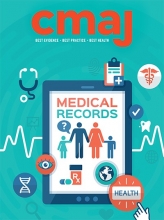Gabapentin is widely prescribed
Gabapentin is a commonly prescribed medication, with about 3.9 million prescriptions filled in Canada in 2015.1 Gabapentin is approved by Health Canada as adjunctive therapy in the management of epilepsy.1 However, the most common recommendations and prescribing internationally are for off-label conditions, including anxiety, alcohol use disorder and chronic pain.2
Gabapentin is an emerging drug of misuse
Reports of gabapentin misuse are increasing.3,4 Gabapentin can be misused orally, intranasally and intravenously, with doses ranging from therapeutic (< 3600 mg/d) to supratherapeutic (12 000 mg/d).2 The exact prevalence of gabapentin misuse is unclear, as the current evidence is of low quality, relies on self-reports or has been derived from selected populations with known substance use disorders.2,3
Misuse of gabapentin produces effects similar to those of opioids and benzodiazepines
Gabapentin misuse has been reported to produce anxiolytic effects and a euphoria similar to that of opioid misuse.3 Gabapentin is known to cause respiratory depression, particularly when combined with other central nervous system depressants.1–3 Long-term use can cause physiologic dependence and withdrawal syndrome on cessation, characterized by diaphoresis, anxiety, confusion and, rarely, seizures. 5,6 There is evidence that other gabapentinoids, such as pregabalin, may carry similar risks.4
The risk of gabapentin misuse is higher in those with concurrent opioid use
A systematic review found that about 15%–22% of people with opioid use disorder also reported gabapentin misuse.2 Although there are limited data evaluating co-consumption with illicit opioids, in a case–control study, coprescribed gabapentin and opioids significantly increased risk of death compared with prescribed opioids alone.7 This is attributed to additive respiratory depression and elevated gabapentin concentrations when gabapentin is consumed with opioids (Box 1).7
Gabapentin doses and adverse effects6,7
Low dose is defined as < 900 mg, moderate dose as 900–1799 mg and high dose as > 1800 mg.
Gabapentin’s exact mode of action is unknown.
It is structurally similar to GABA but does not directly bind to GABA receptors.
High-dose gabapentin is associated with a twofold increase in adverse effects, including somnolence, tremors, ataxia and nystagmus.
Exposure to moderate-dose (adjusted OR 1.56) and high-dose gabapentin (adjusted OR 1.58) is associated with a 60% increased risk of opioid-related death compared with opioids alone.7
Note: GABA = γ-aminobutyric acid, OR = odds ratio.
Clinicians should be aware of potential misuse
Clinicians should be aware of the potential for misuse of gabapentin and exercise particular caution in prescribing to individuals who are taking opioids or those with a history of substance use disorders.2 Clinicians should monitor for potential misuse of prescribed gabapentin as they would for other known drugs of misuse, including patterns of dose escalations, early refill requests and diversion.
Acknowledgement
The authors thank Dr. Elizabeth Shaw for providing comments on the initial manuscript.
Footnotes
Competing interests: None declared.
This article has been peer reviewed.








